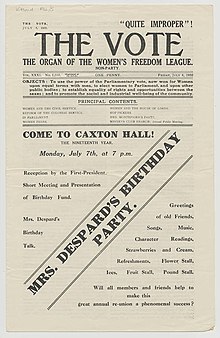
Emmeline Pankhurst was a British political activist who organised the British suffragette movement and helped women win the right to vote. In 1999, Time named her as one of the 100 Most Important People of the 20th Century, stating that "she shaped an idea of objects for our time" and "shook society into a new pattern from which there could be no going back". She was widely criticised for her militant tactics, and historians disagree about their effectiveness, but her work is recognised as a crucial element in achieving women's suffrage in the United Kingdom.

The Women's Social and Political Union (WSPU) was a women-only political movement and leading militant organisation campaigning for women's suffrage in the United Kingdom founded in 1903. Known from 1906 as the suffragettes, its membership and policies were tightly controlled by Emmeline Pankhurst and her daughters Christabel and Sylvia. Sylvia was eventually expelled.

Adela Constantia Mary Walsh was a British born suffragette who worked as a political organiser for the Women's Social and Political Union (WSPU) in Scotland. In 1914 she moved to Australia where she continued her activism and was co-founder of both the Communist Party of Australia and the Australia First Movement.

The United Procession of Women, or Mud March as it became known, was a peaceful demonstration in London on 9 February 1907 organised by the National Union of Women's Suffrage Societies (NUWSS) in which more than 3,000 women marched from Hyde Park Corner to the Strand in support of women's suffrage. Women from all classes participated in what was the largest public demonstration supporting women's suffrage seen until then. It acquired the name "Mud March" from the day's weather since incessant heavy rain left the marchers drenched and mud-splattered.

Teresa Billington-Greig was a British suffragette who was one of the founders of the Women's Freedom League in 1907. She had left the Women's Social and Political Union - also known as the WSPU – as she considered the leadership led by Emmeline Pankhurst and her daughters too autocratic. In 1904, she was appointed by the WSPU as a travelling speaker for the organisation. In Autumn 1906, Billington-Greig was tasked with drumming up support for branches of WSPU in Scotland. On 25 April 1906, she unveiled a 'Votes for Women' banner from the Ladies Gallery during the debate in the House of Commons. In June 1906, she was arrested in a fracas outside of Chancellor of the Exchequer H. H. Asquith's home, and as a result was the first suffragette to be incarcerated in Holloway Prison.
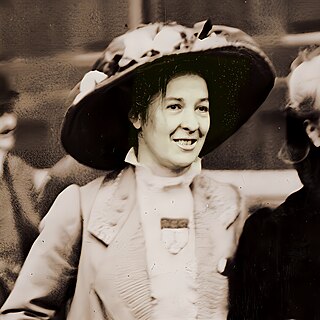
Edith How-Martyn was a British suffragette and a member of the Women's Social and Political Union (WSPU). She was arrested in 1906 for attempting to make a speech in the House of Commons. This was one of the first acts of suffragette militancy. She met Margaret Sanger in 1915 and they created a conference in Geneva. How-Martyn toured India talking about birth control. She had no children and died in Australia.

Charlotte Despard was an Anglo-Irish suffragist, socialist, pacifist, Sinn Féin activist, and novelist. She was a founding member of the Women's Freedom League, the Women's Peace Crusade, and the Irish Women's Franchise League, and an activist in a wide range of political organizations over the course of her life, including among others the Women's Social and Political Union, Humanitarian League, Labour Party, Cumann na mBan, and the Communist Party of Great Britain.
The Women's Peace Council was a group that, during World War I, campaigned for a negotiated end to the conflict. The group's membership was mainly from the Women's Freedom League, a group made up of suffragettes. Many of its members were also pacifists. The Women's Peace Council was founded in 1915 because the leaders of the Women's Freedom League believed that the British government's anti-war efforts were insufficient in ending conflict during World War I and they wanted to bring about negotiated peace. The newly formed Women's Peace Council is a rebirth of the Women's Peace Council from World War I, but it is now a global organization dedicated to peace and well-being, led by women. Their Facebook page describes the purpose of the group as follows: "The Women’s Peace Council will bring together people from different backgrounds to imagine a world without fear and hatred." The co-founders of the newly formed Council are Tezikiah Gabriel, Jayne Hillman, and Deborah Greene. The Charter Members include Dimah Mahmoud, Rosa Davis, Kath Knight, Tracy Chapman, and Jennifer Carolyn King.

Anna Gillies Macdonald Munro was an active campaigner for temperance and the women's suffrage movement in the United Kingdom. Munro organised and was the secretary of the Women's Freedom League campaigning in Scotland. She settled in Thatcham after the First World War but was living in Aldermaston by 1933 and died in Padworth, Berkshire in 1962. She had affordable housing named after her in Thatcham.

A suffragette was a member of an activist women's organisation in the early 20th century who, under the banner "Votes for Women", fought for the right to vote in public elections in the United Kingdom. The term refers in particular to members of the British Women's Social and Political Union (WSPU), a women-only movement founded in 1903 by Emmeline Pankhurst, which engaged in direct action and civil disobedience. In 1906, a reporter writing in the Daily Mail coined the term suffragette for the WSPU, derived from suffragist, in order to belittle the women advocating women's suffrage. The militants embraced the new name, even adopting it for use as the title of the newspaper published by the WSPU.

Hannah Mitchell was an English suffragette and socialist. Born into a poor farming family in Derbyshire, Mitchell left home at a young age to work as a seamstress in Bolton, where she became involved in the socialist movement. She worked for many years in organisations related to socialism, women's suffrage and pacifism. After World War I she was elected to Manchester City Council and worked as a magistrate, before later working for Labour Party leader, Keir Hardie.
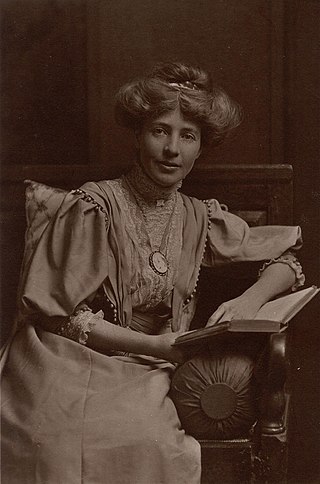
Muriel Lilah Matters was an Australian-born suffragist, lecturer, journalist, educator, actress and elocutionist. Based in Britain from 1905 until her death, Matters is best known for her work on behalf of the Women's Freedom League at the height of the militant struggle to enfranchise women in the United Kingdom.
Constance Antonina Boyle was a British journalist, campaigner for women's suffrage and women's rights, charity and welfare worker, and novelist. She was one of the pioneers of women police officers in Britain. In April 1918, she was the first woman to submit a nomination to stand for election to the House of Commons, which paved the way for other female candidates in the December 1918 general election.

Alice Schofield or Alice Schofield Coates was a British suffragette and politician. She campaigned for women to have the vote and later campaigned for the legislation to give women rights to equal pay.

Maud Joachim was a member of the Women's Social and Political Union, one of the groups of suffragettes that fought for women to get the right to vote in the United Kingdom. She was jailed several times for her protests. Joachim was one of the first suffragettes to go on hunger strike when imprisoned, a protest at not being recognised as political prisoners.
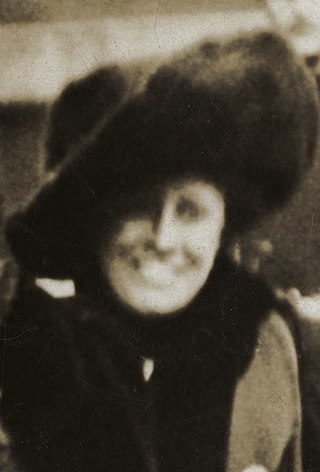
Emma Sproson, was a suffragette, then a suffragist, socialist, politician and women's rights activist. Active in the Midlands and from a working class background, she became Wolverhampton's first female councillor, gaining the nickname "Red Emma" in the process.

Lucy Minnie Baldock was a British suffragette. Along with Annie Kenney, she co-founded the first branch in London of the Women's Social and Political Union.
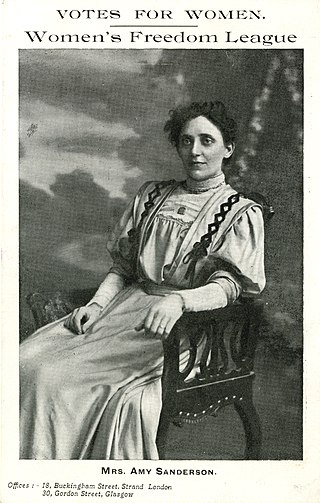
Amy Sanderson née Reid (1876–1931), was a Scottish suffragette, national executive committee member of the Women's Freedom League, who was imprisoned twice. She was key speaker at the 1912 Hyde Park women's rally, after marching from Edinburgh to London, and, with Charlotte Despard and Teresa Billington-Greig, was a British delegate to the 1908 and 1923 international women's congresses.
Florence Earengey was a British suffragette and a member of the Women's Freedom League.
Stella Winifred Newsome was a British teacher and militant suffragette who was active in the Women's Freedom League. She wrote the WFL's history and she was the de facto archivist of the Suffragette Fellowship which was an organisation of those who had been involved in the 1905 to 1914 militant campaign for women to have the vote in Britain.



